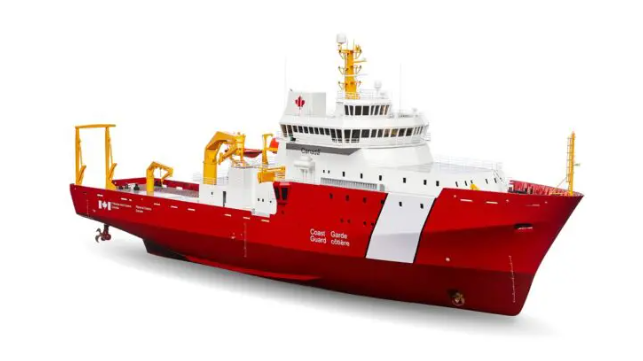$765M Research Vessel Highlights Canada's Shipbuilding Cost Debate

The Canadian government is set to spend about $765 million for a research vessel that it originally expected to cost $85 million - a ninefold increase.
The future "offshore oceanographic science vessel" (OOSV) is a replacement for the CCGS Hudson, the Canadian Coast Guard's largest research vessel, and it has been in planning since 2008. Construction is slated to begin this year at Seaspan's Vancouver Shipyards, one of the two primary shipbuilders under Canada's controversial National Shipbuilding Strategy (NSS).
“As the project has progressed and moved closer to construction, the estimated project cost has been updated to reflect the value of negotiated contracts and actual costs incurred,” Coast Guard spokesman Barre Campbell told The Canadian Press.
Seaspan is the primary builder of coast guard vessels under the NSS, and it recently delivered the third in a long-delayed class of three fisheries science ships for the Canadian Coast Guard. It is currently building two fleet auxiliaries for the Royal Canadian Navy; the cost of the latter contract is expected to come to about $3.3 billion, up from an initial estimate of $1.8 billion.

that matters most
Get the latest maritime news delivered to your inbox daily.
The new OOSV is one part of Seaspan's significant backlog of work for the Canadian Coast Guard. In 2019, Prime Minister Justin Trudeau announced a $12.5 billion fleet renewal plan that would see up to 16 multipurpose coast guard vessels built at Vancouver Shipyards.
The cost growth for the OOSV is part of a much larger debate over the expense of the NSS - particularly the real cost of procurement for a future class of frigates, the new Canadian Surface Combatant. The program was originally estimated to cost $14 billion for 15 ships, but the price tag has ballooned to more than $50 billion - and an independent watchdog review due out Wednesday could find that the price is even higher. Part of the cost growth stems from program delays: the first vessel in the series will deliver in 2030-31, at least five years behind schedule, according to Canada's Department of National Defense.
